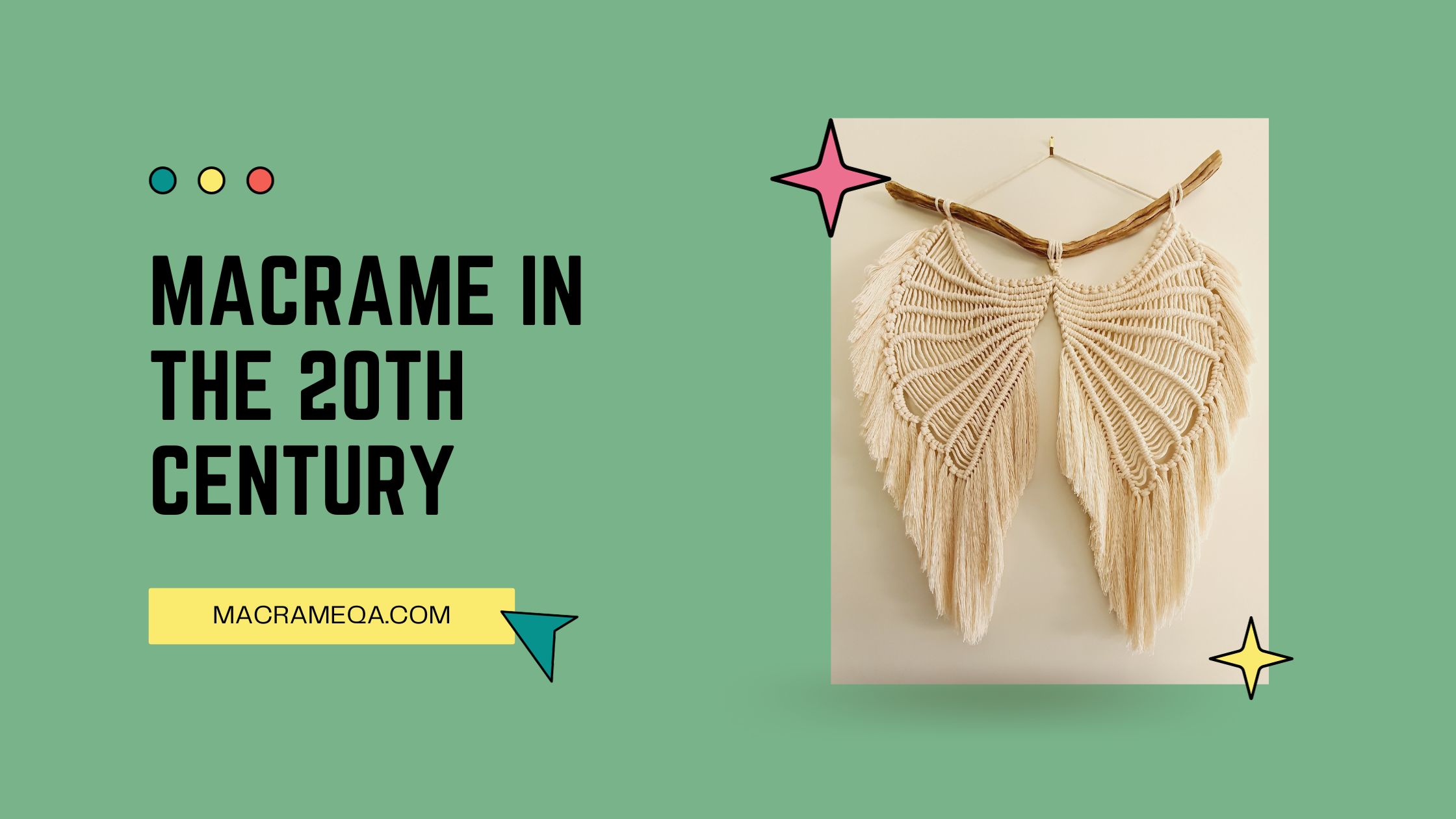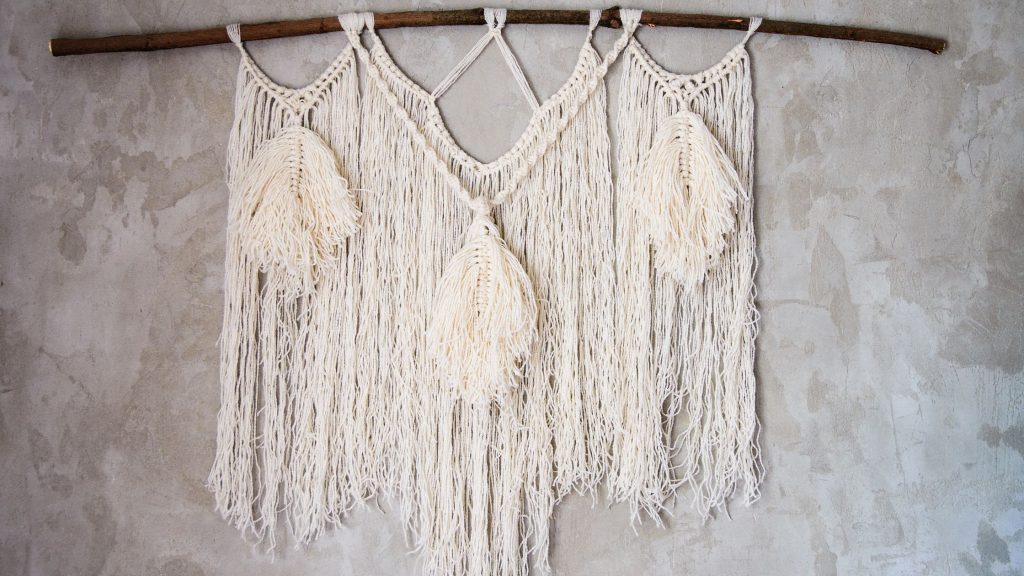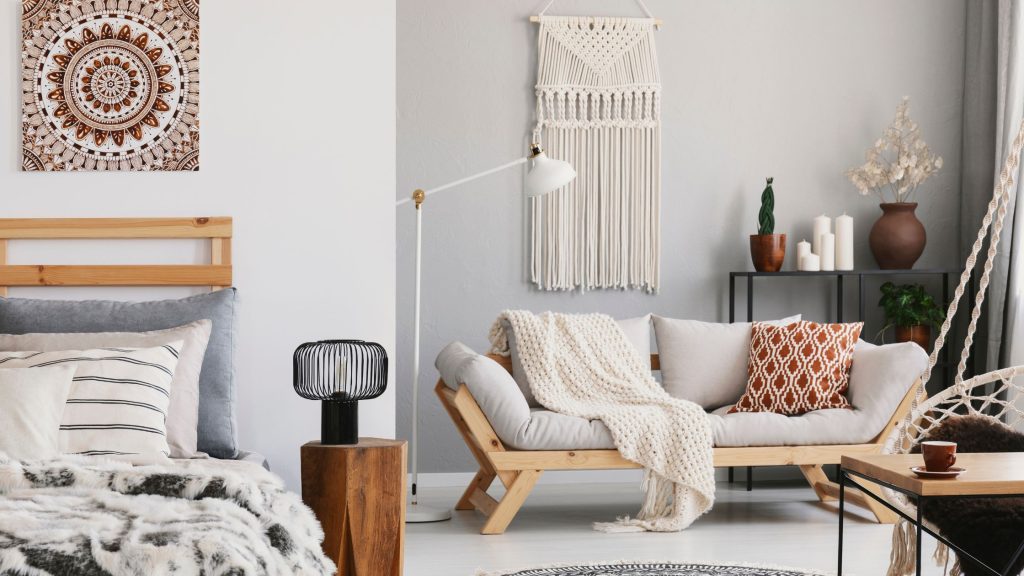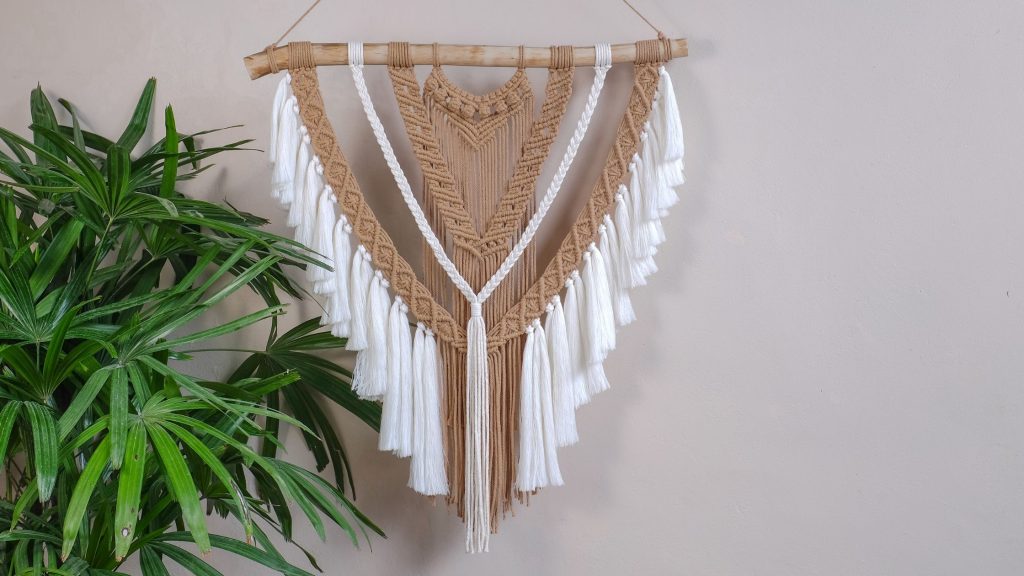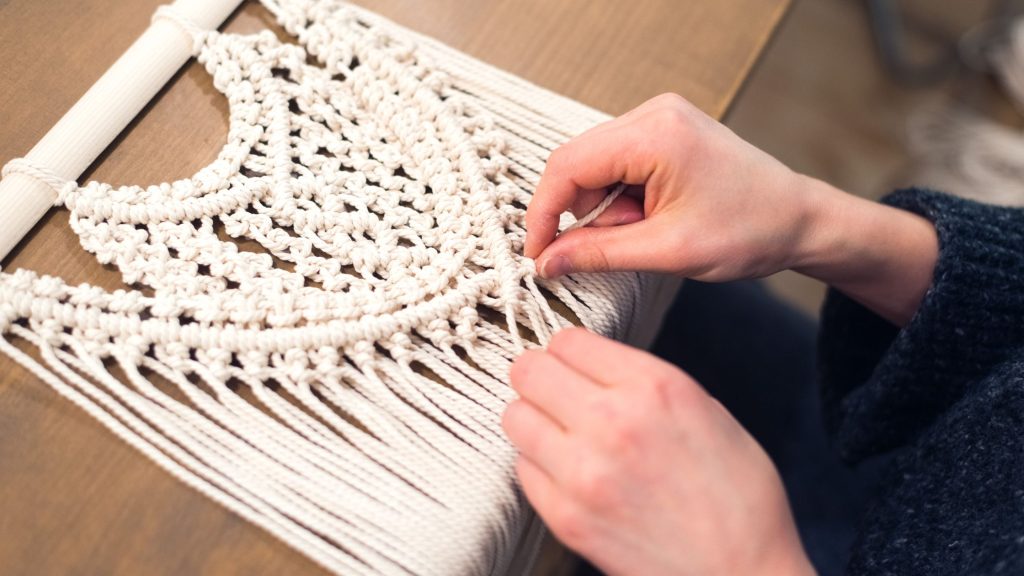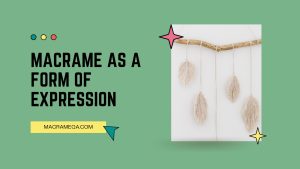Have you ever wondered how macrame gained popularity in the 20th century? Well, let’s take a journey back in time and explore the fascinating origins and rise of this intricate art form. From humble beginnings in ancient civilizations to becoming a beloved craft in the modern era, macrame has weaved its way into the hearts and homes of people worldwide. So sit back, relax, and get ready to unravel the captivating story behind the popularity of macrame in the 20th century.
The Origins of Macrame
Introduction to macrame
Macrame is a versatile textile craft that involves knotting and braiding fibers to create intricate patterns and designs. It has a rich history that dates back thousands of years, originating in ancient civilizations around the world. The word “macrame” itself is derived from the Arabic word “migramah,” which means “fringe.”
Ancient origins
Macrame can be traced back to ancient times, with evidence of its existence in the Babylonian and Assyrian civilizations. It was a popular craft among sailors, who used macrame techniques to make intricate knots and patterns to decorate their ships. Additionally, various cultures, such as the Chinese, Persians, and Egyptians, incorporated macrame into their decorative arts and clothing.
Spread to Europe
Macrame eventually made its way to Europe during the Moorish conquest of Spain. The Moors brought with them their knowledge of knotting techniques, which greatly influenced the development of macrame in Europe. The craft gained further prominence during the Renaissance period, where it was used to create elaborate lace-like designs. Macrame was particularly popular in France and Italy during this time.
Influence on textile art
Macrame’s influence on textile art continued to evolve. It played a significant role in the development of lace-making techniques, such as bobbin lace and needle lace. Macrame became an integral part of European textile traditions and was used to create intricate borders, curtains, and clothing embellishments. The craft was revered for its intricate designs, durability, and versatility.
Macrame’s Evolution in the 20th Century
Revival during the Arts and Crafts Movement
In the late 19th and early 20th centuries, there was a resurgence of interest in traditional crafts and handmade goods as a response to the industrialization of society. The Arts and Crafts Movement, led by influential figures like William Morris, sought to reestablish the value of craftsmanship and promote the use of traditional techniques. Macrame experienced a revival during this time, as artisans and designers embraced its intricate knotting patterns and organic aesthetic.
Macrame in Early 20th Century Fashion
During the early 20th century, macrame found its way into the world of fashion. Designers incorporated macrame into garments, accessories, and even bridal wear. Macrame belts, shawls, and collars became popular fashion statements, adding a touch of intricate craftsmanship to outfits. This period saw a fusion of traditional macrame techniques with contemporary fashion trends.
Artistic Expression and Macrame
Macrame became a medium for artistic expression in the early 20th century. Artists experimented with different materials and knotting techniques to create unique sculptures and wall hangings. Some notable artists, such as Robert Plant and Ruth Asawa, used macrame to create large-scale installations that pushed the boundaries of the craft. Macrame became a form of contemporary art, blurring the lines between craft and fine art.
Macrame in Interior Design
Macrame also found its way into interior design during the early 20th century. Home decor enthusiasts embraced macrame as a way to add texture and visual interest to their spaces. Macrame plant hangers, wall hangings, and curtain tiebacks became popular decorative accents. The natural fibers and intricate designs of macrame added a bohemian and earthy vibe to interior spaces.
Macrame’s Popularity in the 1960s and 1970s
The Bohemian Movement and Macrame
The 1960s and 1970s were a time of cultural revolution and social change. The Bohemian movement, with its emphasis on freedom, individuality, and nonconformity, embraced macrame as a symbol of creative expression. Macrame was seen as a craft that allowed individuals to create unique and personalized pieces that showcased their personality and style.
Influence of Hippie Culture
The rise of hippie culture during the 1960s and 1970s further propelled the popularity of macrame. Hippies embraced macrame as a way to express their connection with nature and their rejection of mainstream consumerism. Macrame accessories like headbands, belts, and jewelry became staples of hippie fashion, adding a rustic and handmade touch to their outfits.
Macrame’s Association with DIY and Self-Sufficiency
Macrame gained a reputation as a craft that embodied the DIY (do-it-yourself) ethos during the 1960s and 1970s. It appealed to individuals who sought to live a self-sufficient lifestyle and rejected mass-produced goods. Macrame allowed people to create their home decor, accessories, and clothing, empowering them to take control of their style and creativity.
Macrame as a Decorative Craft
During this period, macrame became a popular decorative craft. People used macrame techniques to create wall hangings, plant hangers, and room dividers. These handmade pieces added a unique and personal touch to homes, reflecting the creativity and individuality of their creators. Macrame workshops and books on macrame techniques became readily available, allowing more people to learn and explore the craft.
Macrame’s Role in the Craft Revival
Crafts as a Counterreaction to Mass Production
The late 20th century saw a renewed interest in traditional crafts as a counterreaction to the mass production of goods. Macrame, with its focus on handmade techniques and individuality, became a symbol of craftsmanship and authenticity in an increasingly automated and impersonal world.
Macrame as a Craft Skill
Macrame gained recognition as a valuable craft skill during the craft revival. Artists and artisans honed their macrame techniques, pushing the boundaries of the craft and creating innovative designs. Macrame became a skill associated with craftsmanship and expertise, elevating its status in the artistic and design communities.
Macrame’s Presence in Handmade Markets
Handmade markets and craft fairs became popular platforms for artisans to showcase their macrame creations. The demand for unique and handmade goods grew, and macrame artists found an audience for their intricate designs. The authenticity and individuality of macrame pieces appealed to consumers looking for alternatives to mass-produced goods.
The Influence of Craft Magazines
Craft magazines played a significant role in promoting macrame and other craft skills during the craft revival. These publications featured tutorials, patterns, and inspirational stories that encouraged readers to explore their creativity and learn new skills. Macrame designs were often showcased, providing aspiring artists and crafters with a wealth of inspiration and guidance.
Macrame’s Influence on Popular Culture
Macrame in Film and Television
Macrame made several appearances in film and television during the 20th century. It was often used as a visual symbol of the era, representing the free-spirited and bohemian lifestyle of the characters. Macrame wall hangings, plant hangers, and accessories became recognizable elements in set designs, further cementing Macrame’s association with the cultural zeitgeist.
Macrame’s Presence in Music Festivals
As music festivals gained popularity, macrame became a staple of their bohemian aesthetic. Macrame banners, backdrops, and clothing adorned festival stages and vendor booths. It became synonymous with the carefree and artistic atmosphere of music festivals, appealing to the free-spirited nature of festival-goers.
Fan Communities and Macrame
Macrame has also found a dedicated following within fan communities, particularly in the realm of pop culture. Fans of television shows, movies, and bands often incorporate macrame into their fan art and merchandise. Macrame bracelets, keychains, and wall hangings featuring beloved characters and symbols have become popular among these groups, showcasing the versatility and creativity of macrame.
Social Media and the Macrame Trend
The rise of social media platforms has contributed to the resurgence of macrame in recent years. Platforms like Instagram and Pinterest have allowed macrame artists to share their work with a broader audience and inspire others to try the craft. Macrame tutorials, patterns, and inspiration are easily accessible through these platforms, fueling the growing popularity of macrame.
Contemporary Macrame’s Resurgence
Macrame’s Return to Modern Interior Design
Macrame has made a strong comeback in modern interior design. As people seek to create unique and personalized spaces, macrame offers a way to add texture and visual interest to home decor. Macrame wall hangings, plant hangers, and curtains have become popular choices for those looking to incorporate a bohemian and natural aesthetic into their homes.
Macrame Artists and Their Influence
Contemporary macrame artists have played a significant role in redefining and pushing the boundaries of the craft. They experiment with new materials, innovative knotting techniques, and larger-scale installations. The creativity and skill of these artists have brought macrame into the realm of contemporary art, blurring the lines between craft and fine art.
Commercialization of Macrame
The resurgence of macrame has also led to its commercialization. Major retailers and home decor brands now offer mass-produced macrame pieces, catering to the growing demand for this unique craft. While this accessibility has made macrame more widely available, it has also raised questions about authenticity and the value of handmade craftsmanship.
Macrame’s Appeal to Millennials and Gen Z
Macrame has found a particularly strong appeal among millennials and Gen Z. These generations value handmade goods, sustainability, and individuality. Macrame’s embrace of natural fibers, the DIY ethos, and its expressive potential resonate with the values and lifestyle choices of these younger demographics. Macrame workshops, online tutorials, and social media communities have further fueled the popularity of Macrame among millennials and Gen Z.
The Sustainable and Eco-Friendly Appeal of Macrame
Macrame’s Use of Natural Fibers
One of the core principles of macrame is its use of natural fibers. Traditional macrame often uses materials such as cotton, linen, hemp, and jute, which are renewable and biodegradable. This choice of materials aligns with the growing awareness of sustainability and the desire to reduce environmental impact.
Upcycling and Repurposing
Macrame also lends itself well to upcycling and repurposing materials. Old clothing, discarded fabric scraps, and reclaimed fibers can be transformed into unique macrame creations, reducing waste and adding a distinctive touch to the finished pieces. This focus on repurposing aligns with the principles of the circular economy and sustainable consumption.
Connection to the Slow Fashion Movement
Macrame’s association with slow fashion is another reason for its appeal to sustainable living. Slow fashion advocates for conscious and ethical consumption, emphasizing quality over quantity and the longevity of garments and accessories. Macrame pieces, with their handmade craftsmanship and use of natural fibers, embody the values of slow fashion and serve as alternatives to fast fashion trends.
Macrame’s Overall Environmental Impact
Compared to mass-produced textiles and synthetic materials, macrame has a significantly lower environmental impact. The use of natural fibers and the handmade nature of the craft contribute to a reduced carbon footprint. Additionally, the focus on durability and longevity in macrame pieces promotes sustainability by discouraging disposable fashion and home decor.
Macrame’s Influence on Fashion and Accessories
Fashion Designers and Macrame
Macrame continues to inspire and influence fashion designers around the world. Designers incorporate macrame techniques and designs into their collections, adding unique textures and details to garments and accessories. The organic and handmade aesthetic of macrame brings a sense of artistry and craftsmanship to high fashion runways.
Macrame in Jewelry
Jewelry designers have also embraced macrame techniques in their creations. Macrame allows for the creation of intricate knotted patterns using various fibers, making it a versatile medium for jewelry-making. Macrame necklaces, bracelets, and earrings have become popular choices for those seeking unique and personalized accessories.
Macrame in Bag and Purse Design
Macrame has found its way into bag and purse design, offering a bohemian and artisanal alternative to mass-produced bags. Macrame tote bags, clutches, and backpacks showcase the craft’s versatility and durability, making them both fashionable and functional. The intricate knotting patterns add a tactile and visually appealing element to these accessories.
Influence on Swimwear and Boho Fashion
Macrame has also made its mark on the realm of swimwear and boho fashion. Macrame bikinis, monokinis, and one-piece swimsuits have become popular choices for those seeking unique and stylish beachwear. The bohemian aesthetic of macrame aligns well with the carefree and relaxed vibe of boho fashion, making it a natural fit for this style.
Macrame as a Therapeutic and Meditative Craft
The Mindfulness Aspect of Macrame
Macrame offers a sense of mindfulness and relaxation through its repetitive knotting process. As you focus on each knot, the rhythmic motion can calm the mind and help relieve stress. The tactile nature of macrame, along with the slow and deliberate pace, provides a meditative experience that promotes mindfulness and relaxation.
Stress Relief and Creative Outlet
Engaging in macrame can serve as a stress-relieving activity and creative outlet. The process of creating intricate knot patterns allows individuals to channel their energy into something productive and enjoyable. The satisfaction of completing a macrame project can boost mood and provide a sense of accomplishment.
Macrame Workshops and Classes
Macrame workshops and classes have gained popularity as a way for people to learn the craft and experience its therapeutic benefits. These gatherings provide an opportunity to connect with like-minded individuals, share creative ideas, and learn new techniques. Macrame workshops offer a supportive and collaborative environment for beginners and experienced crafters alike.
Macrame in Art Therapy
Macrame has also been utilized as a therapeutic tool in art therapy. Art therapists incorporate macrame as a means of self-expression, creativity, and personal growth. The act of creating macrame pieces can serve as a metaphor for personal transformation and the weaving together of different aspects of one’s life.
The Future of Macrame
Innovation in Macrame Techniques
As macrame continues to evolve, artists and crafters are exploring innovative techniques and pushing the boundaries of the craft. New knotting patterns, alternative materials, and technological advancements are reshaping the possibilities within the realm of macrame. The future holds exciting advancements that will drive the craft forward.
Macrame in Sustainable Architecture
Macrame has the potential to extend beyond textiles and be incorporated into sustainable architecture. The use of macrame techniques in the creation of living walls, interior partitions, and exterior facades can create visually stunning and eco-friendly structures. Macrame’s organic and intricate designs can bring a unique touch to sustainable architectural projects.
Macrame’s Continuity in the Handmade Movement
Macrame’s appeal as a craft that reflects individuality, creativity, and authenticity ensures its continuity within the handmade movement. As more people embrace the values of sustainability, slow living, and personal expression, macrame will continue to thrive as a symbol of craftsmanship and artistry.
Macrame as a Symbol of Craftsmanship
In an increasingly digital and automated world, where mass production dominates, macrame stands as a symbol of craftsmanship and handmade excellence. Its intricate designs and attention to detail celebrate the mastery of a traditional craft. Macrame represents the ability to create unique and meaningful pieces through skill, dedication, and creativity.
Conclusion
As we explore the origins, evolution, and influence of macrame, we see a craft that has transcended time and continues to captivate modern audiences. From its ancient roots to its impact on popular culture, macrame remains a beloved art form that offers a connection to creativity, mindfulness, and self-expression. As we look to the future, macrame will undoubtedly continue to inspire, innovate, and define the boundaries of craftsmanship and design. So, grab your favorite fibers and start knotting – the possibilities are endless!

